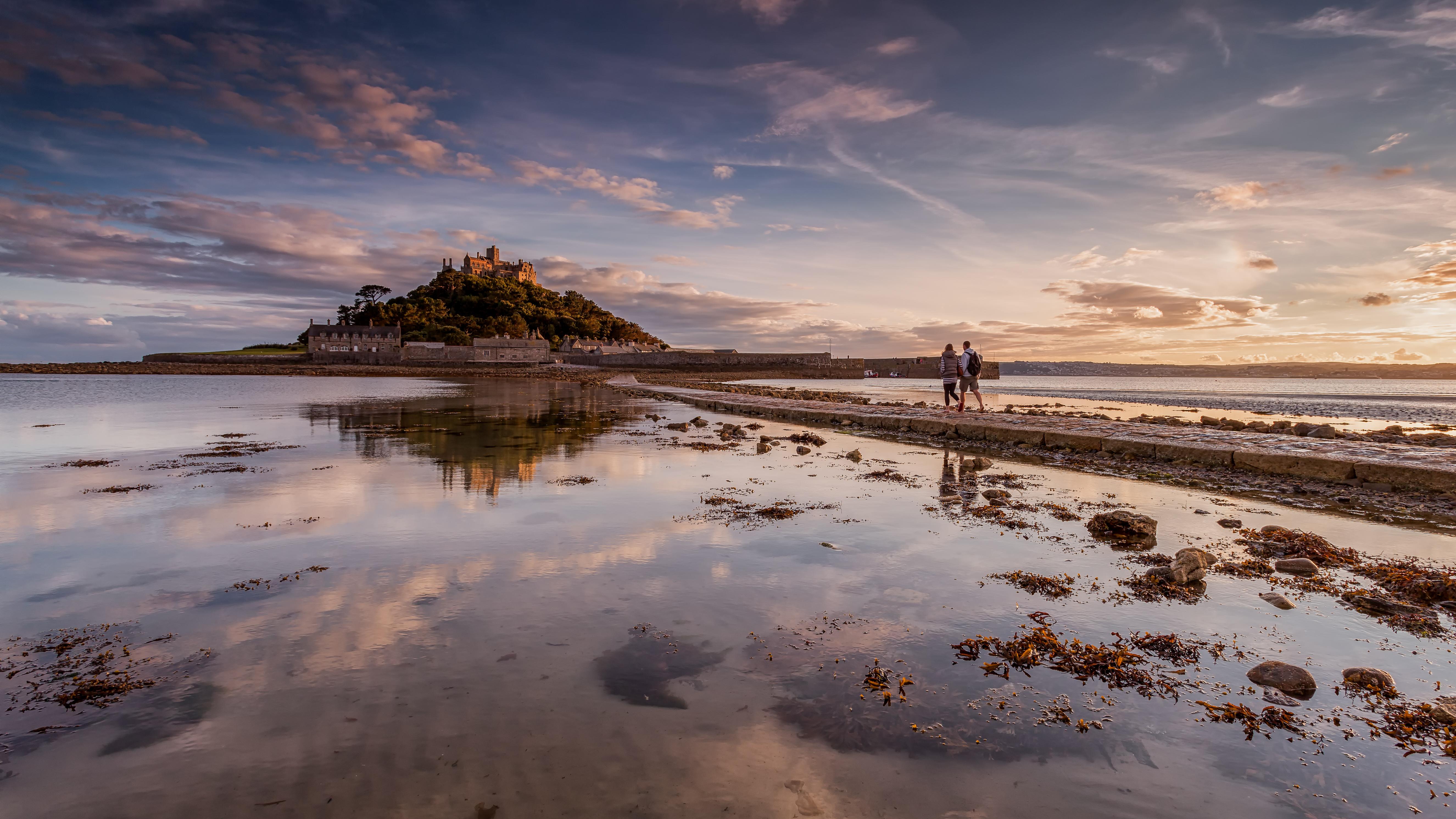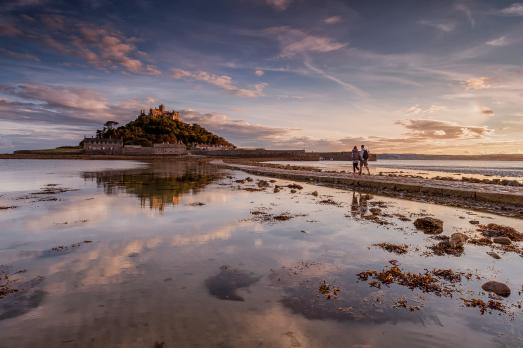The battlemented chapel is lovely and is still a place of pilgrimage. Behind the altar are three 15th century alabaster panels that were crafted in Nottingham. The west end of the church contains a fine 15th century rose window with early 20th century glass.
In 495 AD, a vision of St Michael the Archangel led to the building of a church dedicated to him on the rocky mount. A Celtic monastery was established a few centuries later, and recently a Christian grave dating from 900 AD was discovered.
Edward the Confessor (1042-66) built a chapel on the mount and handed over the abbey to the Benedictine Mont St Michel in France. The present church was begun in 1135 by Abbot Bernard of Mont St Michel and consecrated in 1144. The church was a major pilgrimage destination throughout the Middle Ages.
In 1193, the abbey was seized by Henry de la Pomeray. He began to build a castle, but committed suicide in fear of the consequences when Richard the Lionheart returned from the Crusades. Four miracles were reported in 1262 and 1263, leading to many more pilgrims.
St Michael's Mount gradually separated itself from its French counterpart and in 1385 Richard Auncell of Tavistock became the first non French prior. In 1424 Henry VI granted the monastery to Syon Abbey.
Henry V appropriated the mount during the Hundred Years War, and it became a fortress after the dissolution in 1548. The first beacon to warn of the arrival of the Spanish Armada was lit here in 1588.
The castle was used to store arms for the Royalist forces during the English Civil War. Afterwards, in 1659, Colonel St Aubyn purchased the Mount and his descendents still live in the castle today. In 1954 it was given to the National Trust, with the St Aubyn family retaining a 999 year lease to live in the castle.
There is a cafe on the lower half of the island but not in the church, and bathroom facilities are available, but again, not in the church.


